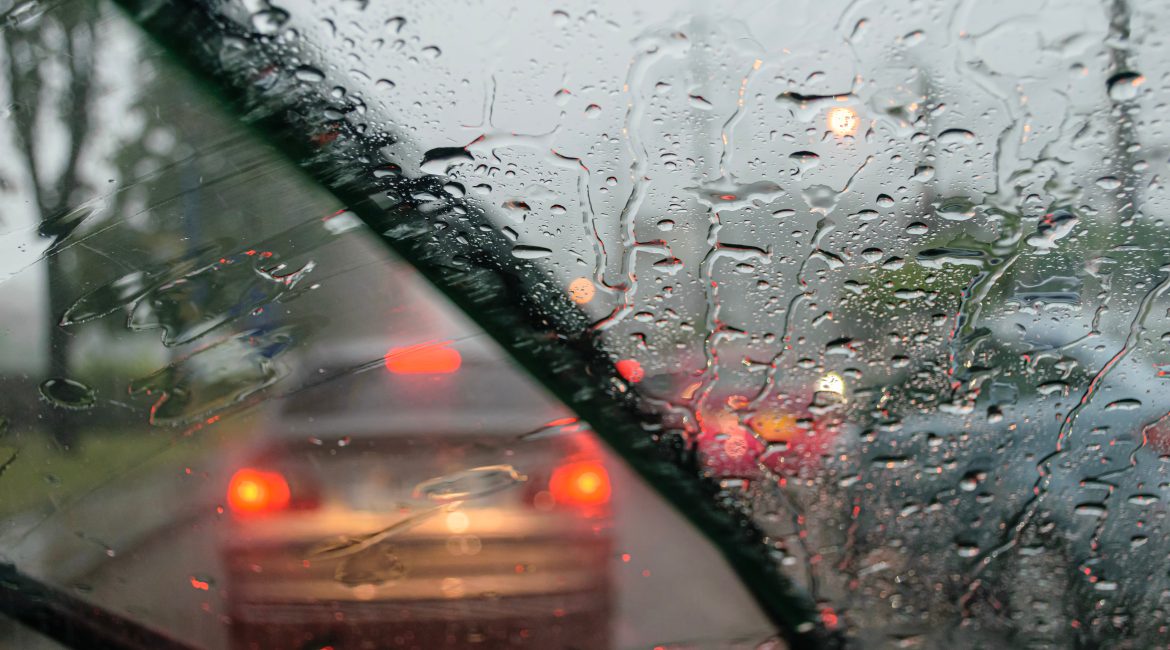We give you all the tips you need on how to drive safely during summer storms that are so prevalent in South Africa, so you can keep yourself and your family safe on the road.
Summer is in full swing! And like many other South Africans, we assume you are, at some point during the summer season, going to hit the open road with your kids, the dogs and the kitchen sink (you can never pack too much, right?).
Discover: How to Keep Your Car Cool in Summer: 5 Easy Tips
If you are driving during summer in South Africa, then chances are you will find yourself in a storm at some point. Driving in a storm can feel incredibly terrifying. And who can blame you? Your windscreen wipers don’t seem to work fast enough, you can hardly see and it seems like no one else knows how to drive in the rain either. It’s a nightmare. But it doesn’t have to be.
It’s important to practice these safe driving techniques whether driving in wind, rain or hail. If possible, it’s advised that you postpone your trip and stay home rather than drive in extreme storms.
How to Drive Safely During Summer Storms
1. Plan your stop in advance
Keep in mind that not only will driving in bad weather stress you and your family out, but it will also make your trip longer. This is why it’s a good idea to check the weather along your route before leaving your home.
If there are some big storms expected for the day you plan on leaving, rather postpone your trip if you can. Otherwise, make sure you have your route loaded to prevent getting lost due to visibility issues on the roads.
2. Take it slow and steady
We get that you have literally waited the entire year to go on this trip and get to your holiday destination, but you need to ensure you drive slowly in bad weather.
When it rains, this results in wet and slippery roads, which can hinder your car’s control and braking abilities. Visibility is also an issue and causes a number of accidents on the roads.
3. Leave space between you and the car in front of you
As we mentioned, in wet and rainy conditions your car cannot brake as quickly as it would in dry weather. It’s advised that you leave at least double the amount of space that you would when driving in good weather conditions.
In general, you should always maintain a safe distance and in wet weather, you need to leave a 4-second gap between you and the car in front.
Read this: 6 Handy Car Maintenance Tips & Tricks Everyone Should Know
4. Make sure your car is in good shape
Your car’s ability to steer and brake properly is crucial when driving in bad weather. Before embarking on any road trip, make sure you get your car checked by a professional mechanic.
Here are the maintenance checks you need to make:
- Replace the windscreen wipers if they do not work properly
- Check oil and coolant levels
- Check tyre tread
- Check your lights are working
- Check the battery
- Check tyre pressure is pumped correctly to the weight of your loaded car
- Check the air filter
- Ensure the aircon is working correctly
- Check Brakes – Check that your brake pads and rotors are in good shape and that your brakes are working properly. If you have any doubt, get them changed.
Tiger Wheel & Tyre offer a free safety check for vehicles. Check it out here.
5. Turn on your lights
When driving in bad weather, you need to turn on your headlights. This will help other vehicles see you and allow you to see more of the road.
6. Listen to the radio
Find out as much information as you can about the storm and any road delays on the radio. The radio station will be able to warn you about upcoming accidents, offer alternate routes and give you weather updates.
Remember to keep the volume at a level that it does not interfere with your driving or distract you.
7. Buckle up
This is the first thing you need to do before the car is even moving – ensure you and all of your passengers are strapped in! This also applies when driving in good weather conditions.
Read next: 6 Safe driving practices that just might save your life
8. Pull over if need be
If the visibility on the road is really bad, then pull over to a safe spot and wait out the storm. Ensure you are not on the road and that your car is parked in a safe area. If there are no safe places to pull over, then drive to your nearest garage to get you and your family to safety.
We hope you and your family can benefit from these expert safety tips and that you have a safe and wonderful holiday! Don’t forget to ensure your car is covered with comprehensive car insurance to protect you from the damage costs of unexpected accidents.
Your Insurance Family,
Oneplan




